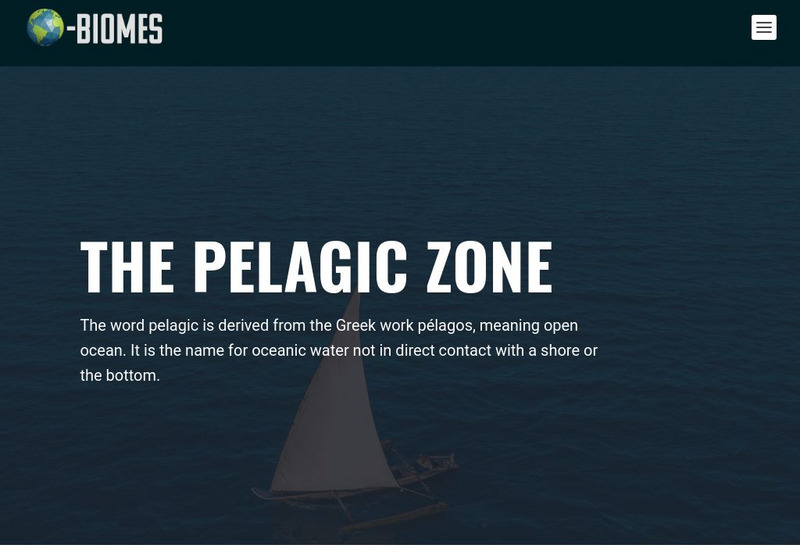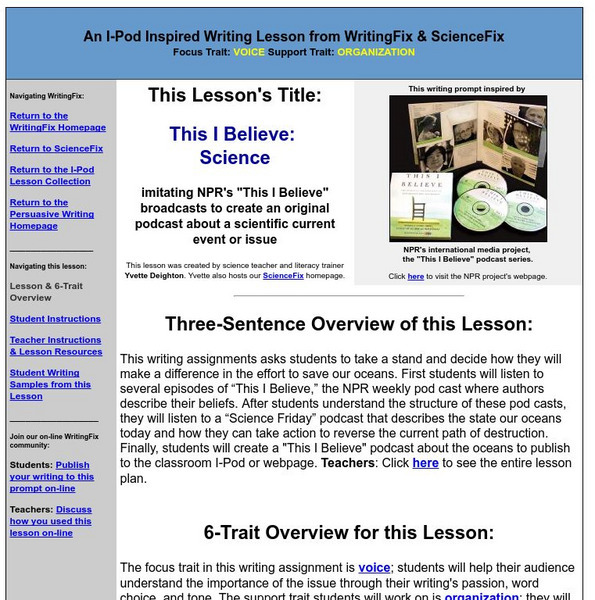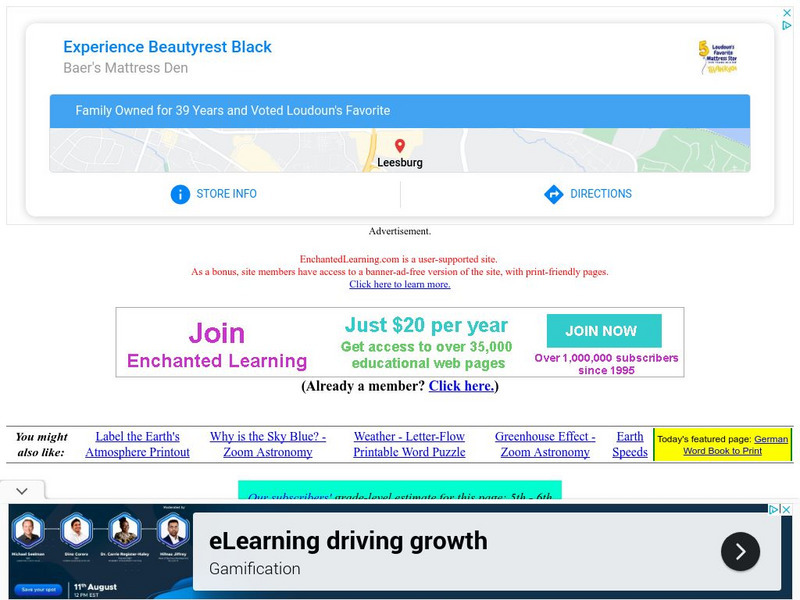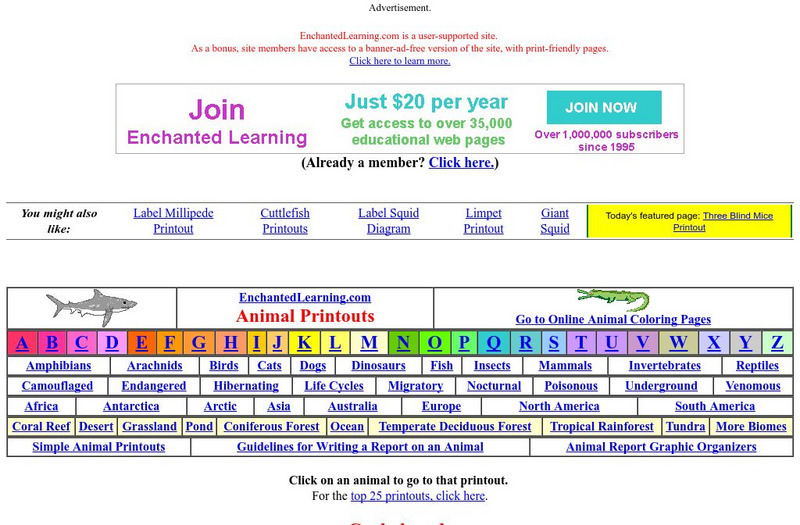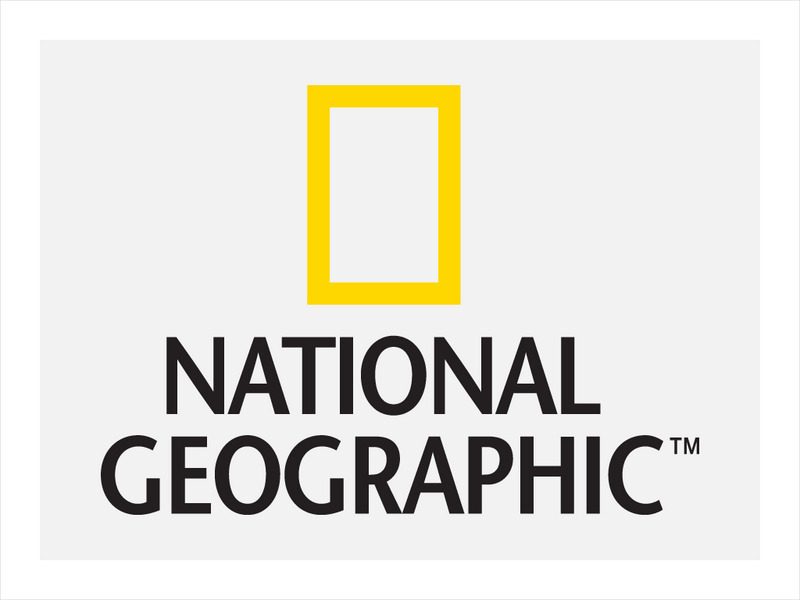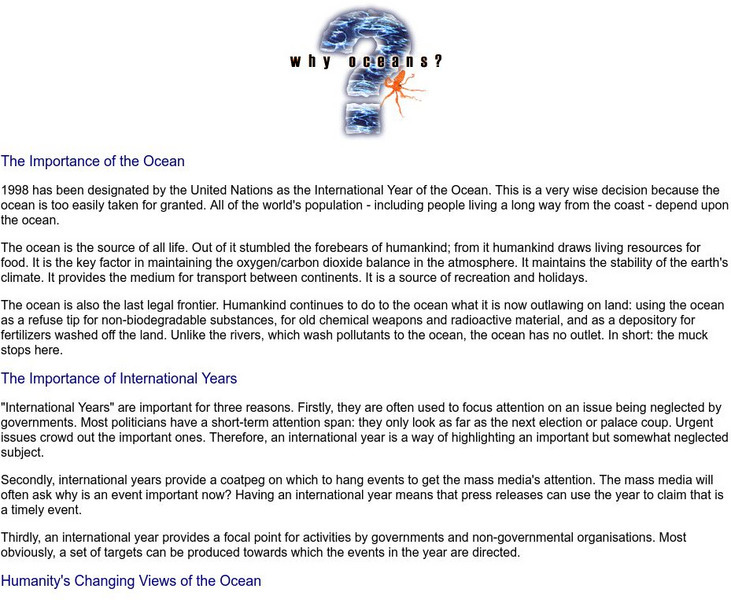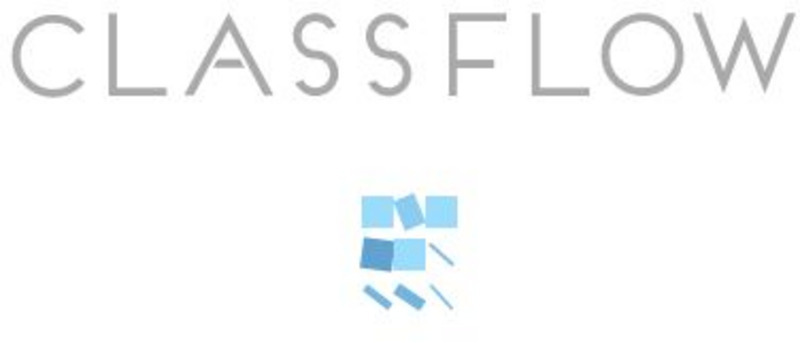Curated OER
If I Can't See It, How Do I Know It's There?
Students build a model ocean using a variety of materials representing the various levels of the ocean. They collect data about the ocean floor in a partner activity. They practice working with topographical mapping grids.
Curated OER
Winds Over Land vs. Ocean
Students explore friction and the way it impacts wind over the ocean compared to over land.
The Wild Classroom
The Wild Classroom: Biomes of the World: Oceanic Pelagic Biome
Learn about the oceanic pelagic ecosystem. Find out about plants, animals, adaptations, and conservation efforts.
Texas A&M University
Ocean World: Bringing the Ocean to the Classroom
Online resource for students and teachers to see information on icebergs, fisheries, coral reefs, waves, currents and more. Provides teachers with learning activities. Has its own ask-an-expert site (Ask Dr. Bob), and provides real-time...
Writing Fix
Writing Fix: An I Pod Inspired Writing Lesson: This I Believe: Science
This writing assignments asks students to decide how they will make a difference in the effort to save our oceans. First students will listen to several episodes of "This I Believe," the NPR weekly pod cast where authors describe their...
Exploring Nature
Exploring Nature Educational Resource: Oceans of the World
A set of illustrated fact pages, and some activity sheets, on coral reefs, tidal pools, and ocean ecosystems. Find maps, graphic organizers, and a movie link to tidal zones. Hyperlinks to specialized vocabulary words are also provided....
Enchanted Learning
Enchanted Learning: Zoom Astronomy: The Earth's Atmosphere
Site provides information on the Earth's atmosphere as well as offers additional information about Earth.
Enchanted Learning
Enchanted Learning: Cephalopods
This site provides links to elementary information about cephalopods. Students and teachers will find links to the blue ring octopus, the giant squid, the cuttlefish, octopus and more.
National Geographic
National Geographic: Your Ocean
This site provides a lesson plan for educators to use when teaching about the Ocean. In addition, there are many other related links and information about the ocean.
Australian Broadcasting Corporation
Australian Broadcasting Corporation: Why Oceans?
This site, which is provided for by the Australian Broadcasting Corporation, gives an article on the importance of the ocean. Everyone on earth depends upon the oceans. Learn why oceans are important and what Australia is doing to help...
ClassFlow
Class Flow: Ocean Life
[Free Registration/Login Required] This flipchart is a multi-subject themed primary unit around the concept of oceans. Reading, Math, Science and Social Studies activities revolve around an ocean theme. In Part 5, students work on...
ClassFlow
Class Flow: Ocean Life
[Free Registration/Login Required] This flipchart is about the different ocean zones: sunlight zone, twilight zone, and midnight zone. It contains video about ocean life in the different zones.
ClassFlow
Class Flow: Oceans
[Free Registration/Login Required] This fun 5 page flipchart is a great introduction to oceans for primary grades. It contains links to web sites about oceans, a cute star fish song, and water poem. It also displays the 4 oceans on a...
ClassFlow
Class Flow: Oceans in Motion
[Free Registration/Login Required] This flipchart is about the movement of oceans. It contains information about waves, tides, and currents. The flipchart contains video and Activote assessment questions.
HotChalk
Hot Chalk: Lesson Plans Page: Ocean Unit Introduction
This lesson will introduce young students to oceans by looking at the animals, plants and water temperatures for different oceans.




